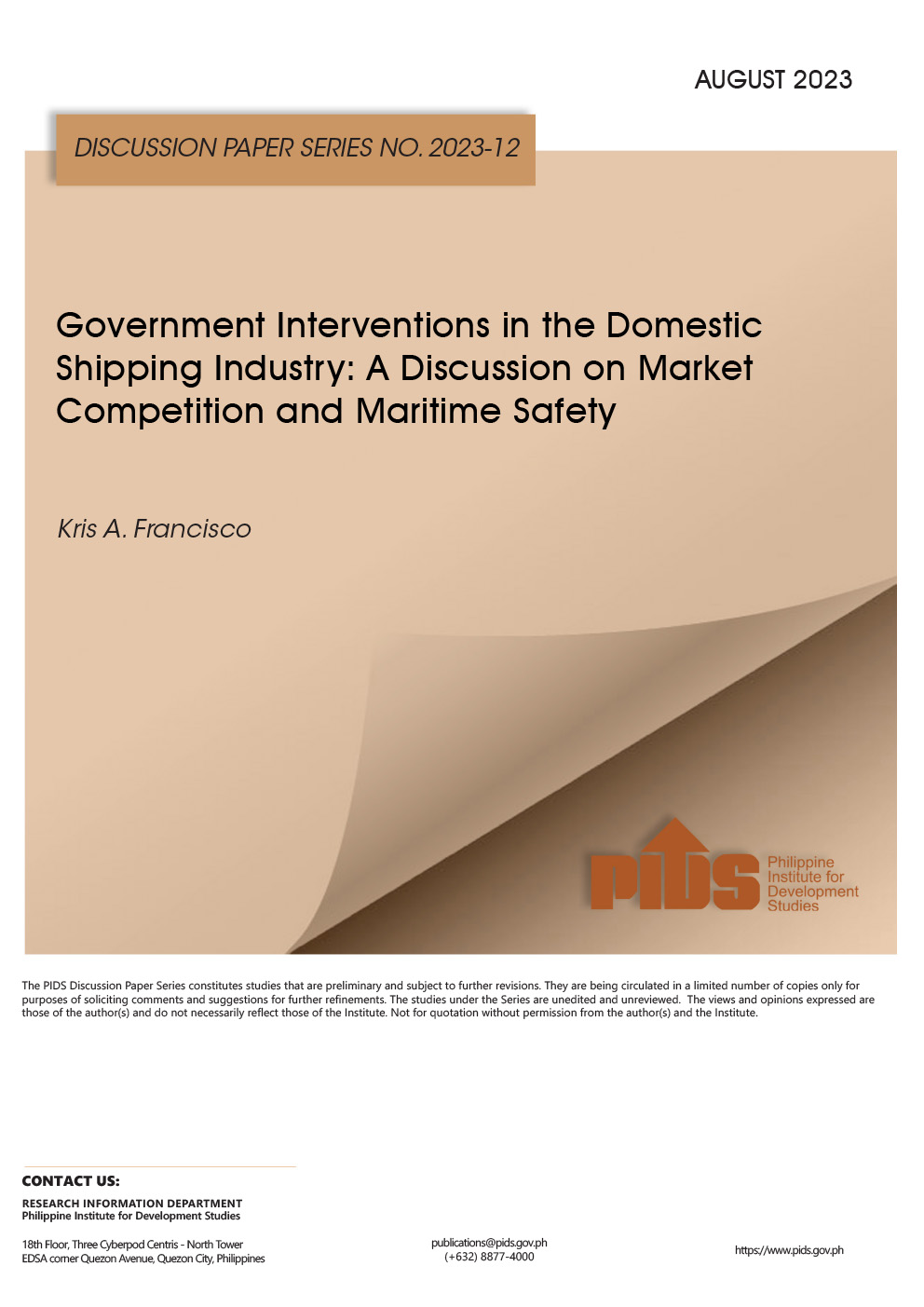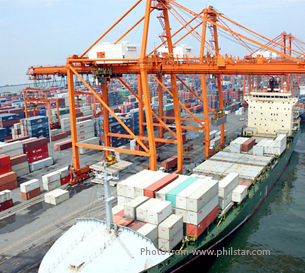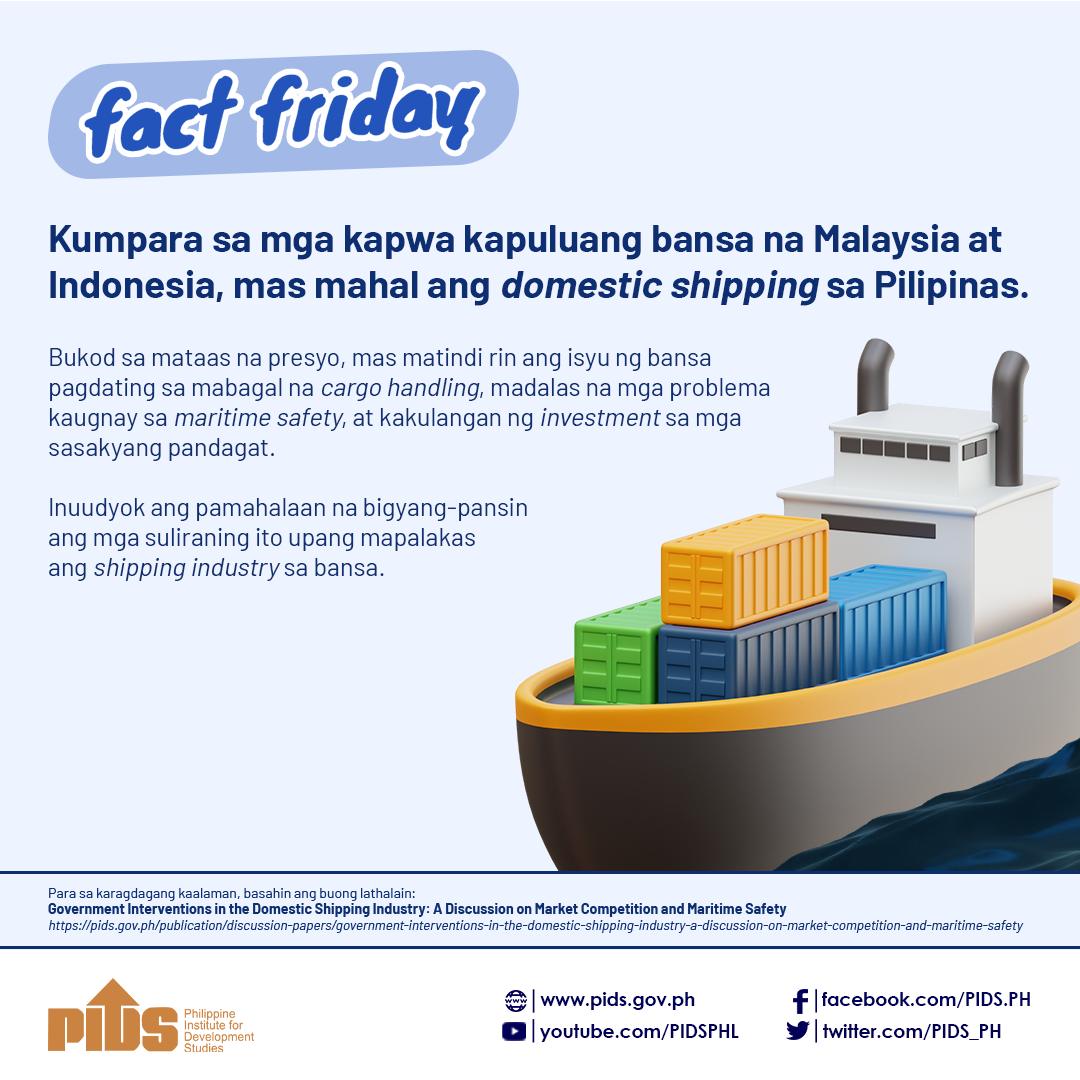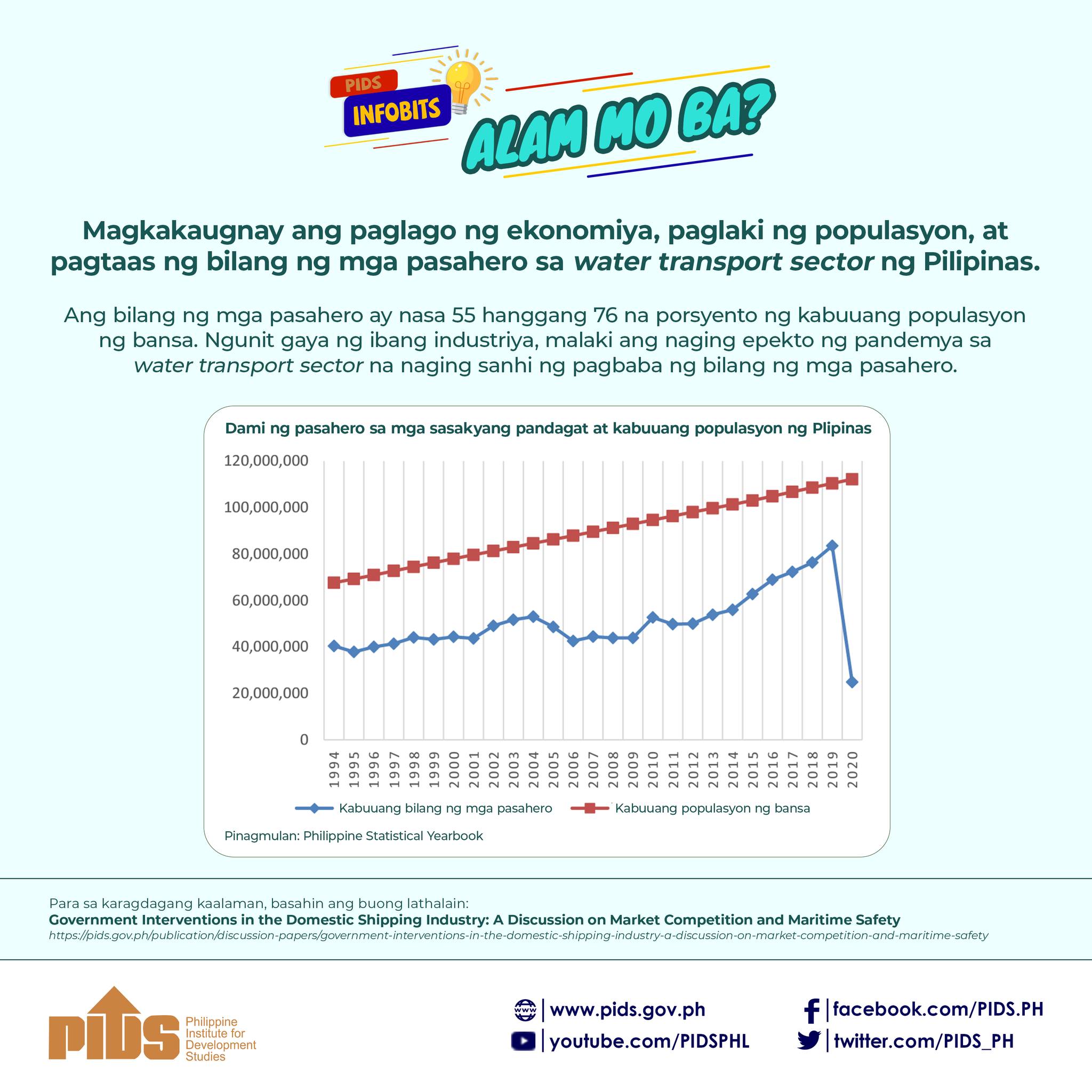High local shipping costs may be attributed largely to the absence of competition in the local shipping industry, thus the need for a comprehensive review and amendment of the Philippine cabotage law. This was according to a recent study published by state think tank Philippine Institute for Development Studies (PIDS).
Authored by Drs. Gilberto Llanto, PIDS president, and Adoracion Navarro, senior research fellow, the study argued for a well-planned review and lifting of cabotage restrictions to bring down the high cost of domestic shipping rates in the country.
Under the present cabotage law, only domestic shipping lines can serve domestic routes. The absence of competition has resulted in "high cost of transporting raw materials to manufacturing sites, finished products and agricultural goods to various destinations, and imported products to distribution areas, thereby increasing operational costs that are passed on to consumers as high prices," the study noted.
The study recommended a serious review of lifting cabotage restrictions, especially in the light of the planned Association of Southeast Asian Nations (ASEAN) Single Shipping Market.
It cited a study of the Joint Foreign Chambers of Commerce in the Philippines (JFCCP), which showed the high cost of domestic shipping compared with the cost of shipping via foreign transshipment.
"It is cheaper to send a container from Manila to Cagayan de Oro via Hong Kong or Kaohsiung (in Taiwan) than to simply transport the cargo directly from Manila to Cagayan de Oro."
A 40-footer container domestic shipping, from Manila to Cagayan de Oro, costs USD 1,860, which is a lot expensive than foreign transshipment via Hong Kong (USD 1,144) and via Kaohsiung (USD 1,044). A local trader could save approximately 43 percent in shipping costs via transshipment to Kaohsiung than by directly availing of domestic shipping services.
The ageing domestic fleet of the maritime transport industry is also a cause for concern. "Domestic vessels for cargo in 2007 were generally 20 years old. Moreover, average age of passenger vessels in 2012 is higher compared to the average age of 5 to 10 years old in the late 1990s."
"Even though the Philippines is the world`s fifth largest ship building country, domestic shipping lines continue to use smaller and even older vessels in transporting cargo, which are uncompetitive compared to those used by their foreign counterparts…the small capacity of cargo vessels implies longer transit and more turnaround times in ports, resulting in higher shipping costs."
For comparison, the study cited that the domestic shipping is dominated by vessels that have a capacity of 200-300 twenty-foot equivalent units (TEUs) compared with those of foreign container ships that can carry as much as 5,000 TEUs.
Thus, it underscored the need for the Maritime Transport Authority to examine very closely the likely effects of the removal of cabotage restriction on domestic shipping, trade, and movement of passengers and cargo.
Several developed countries have moved toward a more liberal cabotage regime. In New Zealand, for example, 21 vessels were engaged in coastwise trade in 2000, 19 of which were flying foreign flags.
Policymakers should seriously review and consider lifting cabotage restrictions, but in a phased-in and well-planned approach, the study emphasized.
Fears of foreign players immediately dominating the local shipping industry may be unfounded. The lack of familiarity with domestic markets may not allow foreign shipping companies to do business in all sectors of coastwise trade.
"The need for market adjustments by foreign competitors interested in engaging in coastwise transport will also give domestic shipping operators ample time to modernize their fleet and operations to be more competitive," the study said. "Competition provides a credible threat to those who refuse to modernize and maintain efficient operation."
For more information about the study, you may download it at http://www.pids.gov.ph/policynotes.php?id=5359&pubyear=2014
Authored by Drs. Gilberto Llanto, PIDS president, and Adoracion Navarro, senior research fellow, the study argued for a well-planned review and lifting of cabotage restrictions to bring down the high cost of domestic shipping rates in the country.
Under the present cabotage law, only domestic shipping lines can serve domestic routes. The absence of competition has resulted in "high cost of transporting raw materials to manufacturing sites, finished products and agricultural goods to various destinations, and imported products to distribution areas, thereby increasing operational costs that are passed on to consumers as high prices," the study noted.
The study recommended a serious review of lifting cabotage restrictions, especially in the light of the planned Association of Southeast Asian Nations (ASEAN) Single Shipping Market.
It cited a study of the Joint Foreign Chambers of Commerce in the Philippines (JFCCP), which showed the high cost of domestic shipping compared with the cost of shipping via foreign transshipment.
"It is cheaper to send a container from Manila to Cagayan de Oro via Hong Kong or Kaohsiung (in Taiwan) than to simply transport the cargo directly from Manila to Cagayan de Oro."
A 40-footer container domestic shipping, from Manila to Cagayan de Oro, costs USD 1,860, which is a lot expensive than foreign transshipment via Hong Kong (USD 1,144) and via Kaohsiung (USD 1,044). A local trader could save approximately 43 percent in shipping costs via transshipment to Kaohsiung than by directly availing of domestic shipping services.
The ageing domestic fleet of the maritime transport industry is also a cause for concern. "Domestic vessels for cargo in 2007 were generally 20 years old. Moreover, average age of passenger vessels in 2012 is higher compared to the average age of 5 to 10 years old in the late 1990s."
"Even though the Philippines is the world`s fifth largest ship building country, domestic shipping lines continue to use smaller and even older vessels in transporting cargo, which are uncompetitive compared to those used by their foreign counterparts…the small capacity of cargo vessels implies longer transit and more turnaround times in ports, resulting in higher shipping costs."
For comparison, the study cited that the domestic shipping is dominated by vessels that have a capacity of 200-300 twenty-foot equivalent units (TEUs) compared with those of foreign container ships that can carry as much as 5,000 TEUs.
Thus, it underscored the need for the Maritime Transport Authority to examine very closely the likely effects of the removal of cabotage restriction on domestic shipping, trade, and movement of passengers and cargo.
Several developed countries have moved toward a more liberal cabotage regime. In New Zealand, for example, 21 vessels were engaged in coastwise trade in 2000, 19 of which were flying foreign flags.
Policymakers should seriously review and consider lifting cabotage restrictions, but in a phased-in and well-planned approach, the study emphasized.
Fears of foreign players immediately dominating the local shipping industry may be unfounded. The lack of familiarity with domestic markets may not allow foreign shipping companies to do business in all sectors of coastwise trade.
"The need for market adjustments by foreign competitors interested in engaging in coastwise transport will also give domestic shipping operators ample time to modernize their fleet and operations to be more competitive," the study said. "Competition provides a credible threat to those who refuse to modernize and maintain efficient operation."
For more information about the study, you may download it at http://www.pids.gov.ph/policynotes.php?id=5359&pubyear=2014











